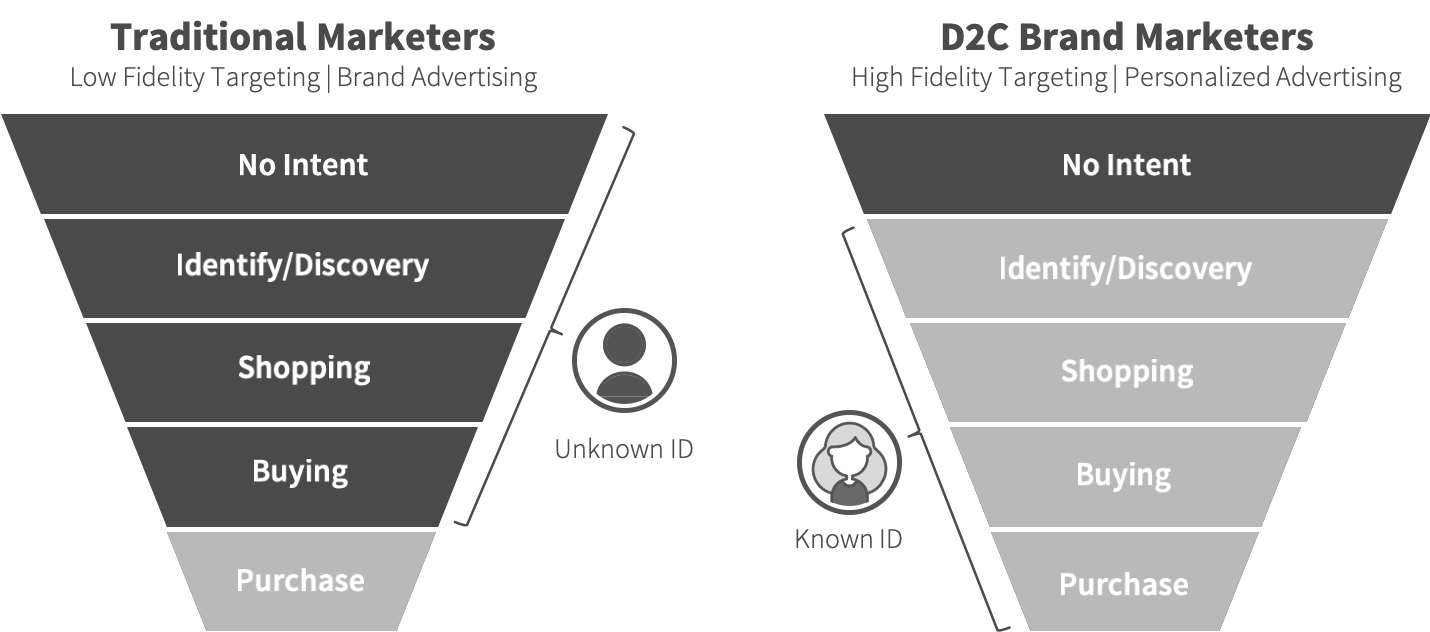It seems like all marketers are talking about these days is personalization. And for a good reason. According to Salesforce, “76% of consumers expect companies to understand their needs and expectations.”
No matter your business type, if you’re not already working toward personalized marketing, you’re falling behind. Still, it can be a challenge to understand how to personalize when you’re a B2B brand.
That’s why there’s tremendous value in starting to act like a Direct to Consumer (D2C) marketer. It’s not that we’re suggesting you totally jump ship on B2B marketing and eliminate your dealer network, rather, we find that acting like a direct-to-consumer marketer allows you to better enable your dealer network.
Focus on the Customer
Note: Oftentimes a brand or manufacturer will call their B2B network partner their customer. When we say customer within our context here, we mean the end user of your product; the person experiencing it.
One area where D2C marketers excel is a maniacal effort to really understand who their customer is. As a B2B marketer, can you really say you understand who your end customer is?
While understanding your customer can mean obtaining specific information like an email address, first name, last name, etc., it can also refer to gathering information about individual customers through studies and data collection. As you work toward understanding your customer to enable personalization, this attention to detail is critically important to understand how to drive prospects through the path to purchase. Customer data and the capability to execute against it are a goldmine. With the application of this type of data, Direct to Consumer companies have already found success at taking unnecessary friction out of the customer experience. If you’re wondering how this applies to your business (SPOILER ALERT) this same thinking and approach can be applied to B2B businesses.
Better Target Your Marketing
When you start to gather data at an individual customer level, it enables you to better target and focus your marketing efforts to drive your advertising. This allows you to mature past relatively low-fidelity, broad targeting with unmeasurable brand advertising to more high-fidelity, focused targeting. In our experience, the shift from broad targeting to focused targeting creates efficiency in your marketing. Not only does this change increase lead quality and conversions but will also decrease ad spend. (In other words, music to a dealer’s ears.)

Sure, those ideas sound easy enough at face value, but how do you actually begin enabling customer data and then using it to personalize your marketing. In order to make your personalization come alive, you must first understand the customer data model. You’ll need to answer: What kind of data is available for your organization to start to gather, collect, and execute on?
The Customer Data Model
Close Data Gaps and Become More Like a D2C Company
The whole point of personalization is to really understand your customer to create highly relevant customer experiences that guide a person through the purchase funnel. Truly understanding your customer at a 1:1 level is no easy task. This customer data model begins to unpack the complexity involved in getting to personalization.
To start to understand this model, we need to first consider the channels where a customer might engage with your brand. Along their path to purchase, your customer will interact with a variety of channels and will constantly bounce around between them. For example, a prospect might get information from a showroom and then bring those insights back home to do some more research. Alternatively, they might do a generic search on google, sign up to receive a newsletter, then one day stop by a booth at an event. Customers don’t think about channels, they think about brands. In the effort toward personalization, the end goal is to create a seamless, branded customer experience across channels. To create this seamless experience, you need to gather and connect a variety of customer data points from a number of sources. In our model, we categorize these data types as: Transaction, Interaction, Behavioral, and Demographic.
- Transaction Data: This refers to data related to purchase or conversion history.
- Interaction Data: This data is gathered when a customer takes an action across web, email, call centers, etc.
- Behavioral Data: This type of data begins to establish customer preferences and is where we can start to understand customer needs and interests.
- Demographic Data: This type of data refers to attributes such as gender, age, income levels, location and other similar data points.
It’s likely that these types of data will come from a variety of sources that will need to be connected to each other, then tied to an individual consumer ID. This is no easy task, but once you’ve enabled your data, it will provide a much clearer view of who your customer is and how they behave at an individual level. This is the key to activating your data and personalizing marketing efforts. Now, rather than sending the same messages to everyone in your database, you will be able to target an individual with the most relevant messages in the right channel at the most optimal time. Where past marketing may have bogged down your dealers with unqualified leads or overspent on ads targeted at too broad an audience, you’ll now better understand which customers are mostly likely to convert and can then specifically target those individuals. Even though you’re managing marketing for a B2B brand, taking on a D2C mentality will allow you to personalize your marketing and provide your dealers with higher quality leads, enabling you dealers to spend more time doing what you both love – closing a deal.


